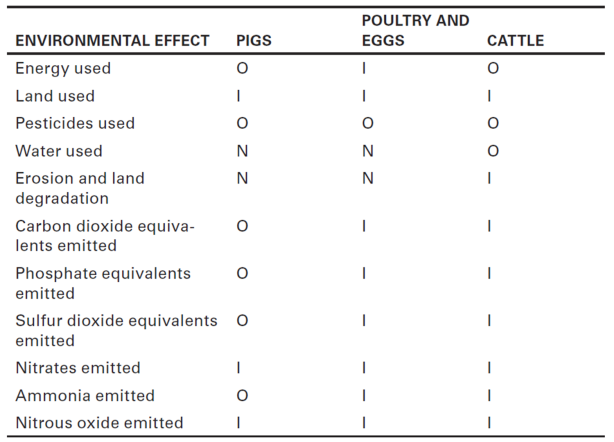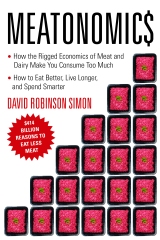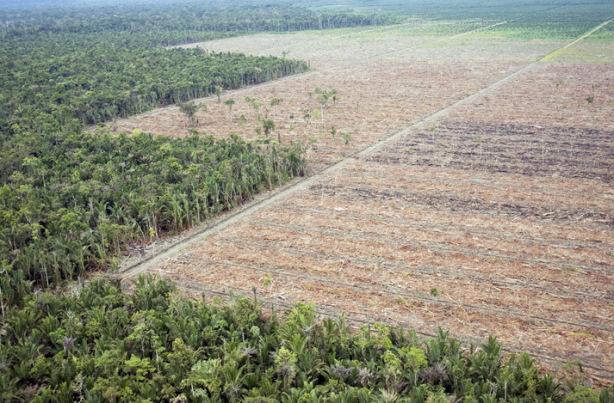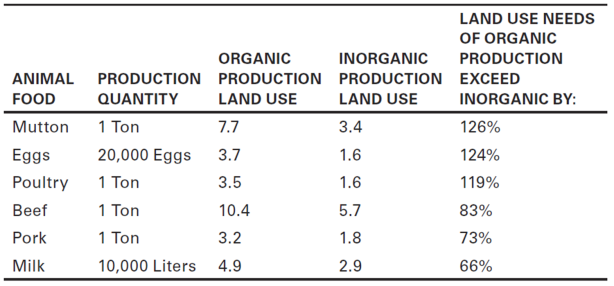Two acres of rain forest are cleared each minute to raise cattle or crops to feed them. 35,000 miles of American rivers are polluted with animal waste. In the mad race to the dinner plate, the scarce resources needed to produce meat, eggs, fish and dairy simply can’t keep pace with the demand for these foods. Some commentators propose “green” alternatives like raising animals locally, organically, on pastures, or in fish farms. But it’s unclear whether these proposals are really viable or are just so much hot, greenhouse gas wafting into the sky.
This is the second installment in a three-part series which seeks to answer the question: can animal foods be produced sustainably? In the first segment, we learned that determining the carbon effects of local consumption can be about as complex as planning a seven-course meal. Simply put, locally raised animal foods can easily be less carbon-friendly than those from a distant continent, and local consumption thus does not make animal foods sustainable. In the third segment, we learn that fish farming may not be silver bullet of food production to feed the world sustainably. In this piece, we look at another key issue: whether farmed animals’ carbon footprint can be improved by raising them organically.
Manic for Organic
Is organic food really as good for the environment as we’d like to think? Despite Prince Charles’s claim that organic farming provides “major benefits for wildlife and the wider environment,” a 2006 British government report found no evidence that the environmental impact of organic farming is better than that of conventional methods.[1] In fact, because of large differences in land needs and growth characteristics between organic and inorganic animals, it’s hard to draw conclusions about the environmental benefits of one production method over the other. As Table 1 below shows, considerably more land is required to produce organic animal foods than inorganic—in some cases more than double. This higher land use is associated with higher emissions of harmful substances like ammonia, phosphate equivalents, and carbon dioxide equivalents. Further, denied growth-promoting antibiotics, organic animals grow more slowly—which leads to higher energy use for organic poultry and eggs. Thus, as Table 2 shows, when the overall effects of organic and inorganic animal production are compared, the results are notably mixed.
Table 1
Land Use Needs of Organic and Inorganic Animal Food Production (in acres)[2]
Table 2
Organic or Inorganic Production—Which Is Better for the Environment?[3]

Legend:
O = Organic is better (based on lower use or emission)
I = Inorganic is better (based on lower use or emission)
N = No significant difference
We can see that poultry and eggs are mostly more eco-friendly when raised inorganically, while it’s generally more eco-friendly to raise pigs organically. As for cattle, factors like methane emissions and water use make the comparison more complicated.
 Take methane. Besides figuring prominently in many a fart joke, it’s a highly potent greenhouse gas (although in its natural state, it’s actually odorless). A single pound of it has the same heat-trapping properties as 21 pounds of carbon dioxide.[4] Organic cattle must be grazed for part of their lives, which means that unlike feedlot cattle, they eat grass. However, cattle rely more on intestinal bacteria when digesting grass than grain, and this makes them more flatulent—and methane-productive—when eating grass. The result is that grass-fed, organic cattle generate four times the methane that grain-fed, inorganic cattle do.[5]
Take methane. Besides figuring prominently in many a fart joke, it’s a highly potent greenhouse gas (although in its natural state, it’s actually odorless). A single pound of it has the same heat-trapping properties as 21 pounds of carbon dioxide.[4] Organic cattle must be grazed for part of their lives, which means that unlike feedlot cattle, they eat grass. However, cattle rely more on intestinal bacteria when digesting grass than grain, and this makes them more flatulent—and methane-productive—when eating grass. The result is that grass-fed, organic cattle generate four times the methane that grain-fed, inorganic cattle do.[5]
Then there are the water issues. On a planet where water is not only the origin of all life but is also the key to its survival, animal agriculture siphons off a hugely disproportionate share of this increasingly scarce resource. It can be hard to picture the quantities of water involved, so consider a few examples. The 4,000 gallons required to produce one hamburger is more than the average native of the Congo uses in a year.[6]
 And the 3 million gallons used to raise a single, half-ton beef steer would comfortably float a battleship.[7]
And the 3 million gallons used to raise a single, half-ton beef steer would comfortably float a battleship.[7]
Pound for pound, it takes up to one hundred times more water to produce animal protein than grain protein.[8] Organic cattle require 10 percent less water than inorganic but still need 2.7 million gallons each during their lives, enough to fill 130 residential swimming pools. In light of the orders-of-magnitude difference in water needed to raise plant and animal protein, does a 10 percent savings for organic cattle really matter? Looked at another way, if Fred litters ten times a day while Mary litters only nine times, is Mary’s behavior really good for the environment? The value of such comparisons is dubious.
These factors lead to one conclusion: we must treat as highly suspect the claim that organic animal agriculture is sustainable. Organic methods are an environmentally-mixed bag—sometimes slightly better, sometimes a little worse, and often the same as inorganic. But since animal protein takes many times the energy, water, and land to produce as plant protein, any modest gains from raising animals organically are largely irrelevant.[9] Shocked that organic production isn’t the silver bullet of sustainability? Stay tuned. Next time, we’ll look at another favorite of those who advocate “green” animal agriculture: pasture farming. For more surprising information on this and other issues related to animal food production, check out my just-released book Meatonomics: How the Rigged Economics of Meat and Dairy Make You Consume Too Much – and How to Eat Better, Live Longer, and Spend Smarter (Conari Press, 2013).
[1] C. Foster et al., “Environmental Impacts of Food Production and Consumption: A Report to the Department for Environment Food and Rural Affairs,” Eldis (2006).
[2] Data expressed in hectares converted to acres. A. G. Williams, E. Audsley, and D. L. Sandars, “Determining the Environmental Burdens and Resource Use in the Production of Agricultural and Horticultural Commodities” (2006), Main Report, UK Department of Environment, Food, and Rural Affairs Research Project IS0205.
[3]Williams, Audsley, and Sandars, “Environmental Burdens in Production of Agricultural Commodities”; David Pimentel and Marcia Pimentel, Food, Energy, and Society, (Niwot, CO: Colorado University Press, 1996).
[4] US Environmental Protection Agency, “Methane: Science” (2010).
[5] L. A. Harper et al., “Direct Measurements of Methane Emissions from Grazing and Feedlot Cattle,” Journal of Animal Science 77, no. 6 (1999): 1392–1401.
[6] ChartsBin, “Total Water Use per Capita by Country,” accessed December 23, 2012, http://chartsbin.com.
[7] Assuming the animal weighs 1,200 pounds; metric units converted to imperial. T. Oki et al., “Virtual Water Trade to Japan and in the World” (presentation, International Expert Meeting on Virtual Water Trade, Netherlands, 2003).
[8] Pimentel and Pimentel, Food, Energy and Society.
[9] David Pimentel and Marcia Pimentel, “Sustainability of Meat-Based and Plant-Based Diets and the Environment,” American Clinical Journal of Nutrition 78, no. (3) (2003): 6605–-35.


